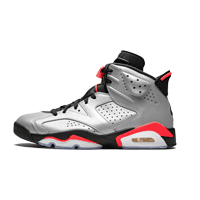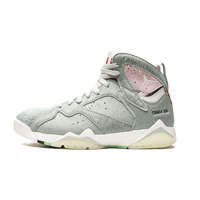Bookkeeping
Pooled LIFO
The adjustment under section 481 is equal to the difference between the recomputed LIFO value and the LIFO value of the pool determined under the taxpayer’s former method. The base-year cost of the items in a dollar-value pool at the end of a taxable year will be determined by dividing the IPI computed for the taxable year into the current-year cost of the items in that pool determined in accordance with paragraph (e)(2)(ii) of this section. If the comparison of the base-year cost of the beginning and ending inventory produces a current-year increment, the base-year cost of that increment will be multiplied by the IPI computed for that taxable year to determine the LIFO value of that layer. The rules in this paragraph (h) do not apply to a transaction entered into with the principal purpose to avail the transferee of a method of accounting that would be unavailable to the transferor (or would be unavailable to the transferor without securing consent from the Commissioner). In determining the principal purpose of a transfer, consideration will be given to all of the facts and circumstances. Inventory is deemed acquired in a bargain purchase if the actual cost of the inventory (or, if appropriate, the allocated cost of the inventory) was less than or equal to 50 percent of the replacement cost of physically identical inventory.
- The particularity of the LIFO method is that it takes into account the price of the last acquired items whenever you sell stock.
- (i) Under the double-extension method the quantity of each item in the inventory pool at the close of the taxable year is extended at both base-year unit cost and current-year unit cost.
- See also paragraph (f) of this section for rules relating to the change to the dollar-value LIFO method from another LIFO method.
- (iv) To determine whether there is an increment or liquidation in a pool for a particular taxable year, the end of the year inventory of the pool expressed in terms of base-year cost is compared with the beginning of the year inventory of the pool expressed in terms of base-year cost.
- If LIFO
were to disappear, many U.S. companies could face large income tax
liabilities from accelerated income recognition.
He is the sole author of all the materials on AccountingCoach.com. These are just a few of the HR functions accounting firms must provide to stay competitive in the talent game. (d) Pursuant to any other proper method which, in the opinion of the Commissioner, clearly reflects income. Charlene Rhinehart is a CPA , CFE, chair of an Illinois CPA Society committee, and has a degree in accounting and finance from DePaul University.
However, inventories of materials of an unlike nature may not be placed into one pool, even though such materials become part of otherwise identical finished products. Dollar-value LIFO places all goods into pools, measured in terms of total dollar value, and all decreases or increases to those pools are measured in terms of the total dollar value of the pool. The dollar-value LIFO approach allows companies to place a larger number of goods into a single pool, rather than being restricted to, for example, placing only substantially similar items into a pool, as in the specific goods pooled LIFO method. Another advantage of DVL is a reduced need for detailed record keeping. Under standard LIFO, you must track your inventory by units, even if you combine similar units into pools.
Last in, first out (LIFO) is a method used to account for business inventory that records the most recently produced items in a series as the ones that are sold first. That is, the cost of the most recent products purchased or produced is the first to be expensed as cost of goods sold (COGS), while the cost of older products, which is often lower, will be reported as inventory. This article highlights the impact of LIFO accounting, widely used
in the U.S. but scarcely used elsewhere. If LIFO
were to disappear, many U.S. companies could face large income tax
liabilities from accelerated income recognition. In 2007, Exxon Mobil
Corp. reported its aggregate replacement cost of inventories at
year-end exceeded the inventories’ LIFO carrying value by $25.4
billion.
If the Commissioner requires a taxpayer to change to the IPIC method, and the taxpayer does not provide sufficient information from its books and records to compute an adjustment under section 481, the Commissioner may implement the change using the simplified transition method described in paragraph (e)(3)(iv)(B)(2)(ii) of this section. (iii) Under the double-extension method a base-year unit cost must be ascertained for each item entering a pool for the first time subsequent to 8 considerations for a new major gifts campaign the beginning of the base year. In such a case, the base-year unit cost of the entering item shall be the current-year cost of that item unless the taxpayer is able to reconstruct or otherwise establish a different cost. If the entering item is a product or raw material not in existence on the base date, its cost may be reconstructed, that is, the taxpayer using reasonable means may determine what the cost of the item would have been had it been in existence in the base year.
Which financial ratios does LIFO ending inventory calculation affect?
A taxpayer electing to establish dollar-value pools under this paragraph (b)(4) may combine IPIC pools that comprise less than 5 percent of the total current-year cost of all dollar-value pools to form a single miscellaneous IPIC pool. A taxpayer electing to establish dollar-value pools under this paragraph (b)(4) may combine a miscellaneous IPIC pool that comprises less than 5 percent of the total current-year cost of all dollar-value pools with the largest IPIC pool. A taxpayer may not change to, or cease using, either 5 percent rule without obtaining the Commissioner’s prior consent. Whether a specific IPIC pool or the miscellaneous IPIC pool satisfies the applicable 5 percent rule must be determined in the year of adoption or year of change (whichever is applicable) and redetermined every third taxable year.
LIFO Liquidation
Another major difference between IFRS and GAAP is that IFRS requires
entities to carry inventory at the lower of cost or net realizable
value. GAAP, on the other hand, values inventories at the lower of
cost or current replacement cost, which is subject to a ceiling of net
realizable value and a floor of net realizable value minus a normal
profit margin. For 2002, R must compute a new IPI under the double-extension IPIC method to determine the LIFO value of its dollar-value pool. (D) Has at least one subsumed BLS category that either does not have any assigned items or is a separate 10 percent BLS category. The inventory prices were increased by 25% during the year 2012.
Advantages of the Dollar Value LIFO Inventory Method
(b) Principles for establishing pools of manufacturers and processors—(1) Natural business unit pools. A pool shall consist of all items entering into the entire inventory investment for a natural business unit of a business enterprise, unless the taxpayer elects to use the multiple pooling method provided in subparagraph (3) of this paragraph. Thus, if a business enterprise is composed of only one natural business unit, one pool shall be used for all of its inventories, including raw materials, goods in process, and finished goods.
CFR § 1.472-8 – Dollar-value method of pricing LIFO inventories.
A taxpayer that voluntarily changes its method of selecting BLS categories or of selecting a BLS category for a specific item must establish a new base year in the year of change as described in paragraph (e)(3)(iv)(B) of this section. (C) Assignment of inventory items to BLS categories—(1) In general. Except as provided in paragraph (e)(3)(iii)(C)(2) of this section, a taxpayer must assign each item in a dollar-value pool to the most-detailed BLS category of the selected BLS table that contains that item. For example, in Table 6 of the “PPI Detailed Report” for a given month, the commodity codes for the various BLS categories run from 2 to 8 digits, with the least-detailed BLS categories having a 2-digit code and the most-detailed BLS categories usually (but not always) having an 8-digit code.
In determining whether such similarity exists, consideration shall be given to all the facts and circumstances. The formulation of detailed rules for selection of pools applicable to all taxpayers is not feasible. The selection of pools in each case must also take into consideration such factors as the nature of the inventory items subject to the dollar-value LIFO method and the significance of such items to the taxpayer’s business operations. Where similar types of goods are inventoried in natural business units and multiple pools of the taxpayer, the Commissioner may apportion or allocate such goods among the natural business units and the multiple pools, if he determines that such apportionment or allocation is necessary in order to clearly reflect the income of the taxpayer. In the case of a taxpayer using a non-IPIC method to determine the LIFO value of inventory, the layers previously determined under that method, if any, and the LIFO values of those layers are retained if the taxpayer voluntarily changes to the IPIC method. Instead of using the earliest taxable year for which the taxpayer adopted the LIFO method for any items in the dollar-value pool, the year of change is used as the new base year for the purpose of determining the amount of increments and liquidations, if any, for the year of change and subsequent taxable years.
Example of LIFO
For example, a gasoline-engine manufacturer that also manufactures the pistons used in those engines and regularly sells some of the pistons (e.g., to retailers of replacement parts) must assign both finished pistons that have not been affixed to an engine block and piston WIP items to the most-detailed PPI category that includes pistons. Finished pistons that have been affixed to an engine block must be assigned to the most-detailed PPI category that includes gasoline engines. In contrast, if sales of these pistons occur infrequently, the taxpayer must assign both finished pistons and piston WIP items to the most-detailed PPI category that includes gasoline engines.
The combination or separation of the LIFO value of his inventory for the base year and each yearly layer of increment shall be made in accordance with the appropriate method set forth in this subparagraph, unless the use of a different method is approved by the Commissioner. A taxpayer may establish a new base year in the year following the taxable year for which the taxpayer computed a compound category inflation index under this paragraph (e)(3)(iii)(D)(4) for one or more affected BLS categories in a dollar-value pool. See paragraph (e)(3)(iv)(B) of this section for the procedures and computations incident to establishing a new base year. In the case of a taxpayer using the double-extension IPIC method, the category inflation index for a BLS category is the quotient of the BLS price index for the appropriate or representative month of the current year divided by the BLS price index for the appropriate month of the taxable year preceding the base year (base month). (c) Principles for establishing pools for wholesalers, retailers, etc—(1) In general.
Once the actual increase is computed, it is then adjusted for current year prices and then we can know the total value of ending inventory under dollar-value LIFO. LIFO is banned under the International Financial Reporting Standards that are used by most of the world because it minimizes taxable income. That only occurs when inflation is a factor, but governments still don’t like it. In addition, there is the risk that the earnings of a company that is being liquidated can be artificially inflated by the use of LIFO accounting in previous years. Most companies that use LIFO are those that are forced to maintain a large amount of inventory at all times.
Under regular LIFO, you can create pools of inventory, but each unit in the pool must be essentially identical to every other unit. If you sell or produce items that have annual model changes, you would have to create a new pool for each different model. This increases LIFO liquidation as you sell off your older models. You group DVL pools by year, not unit, so you don’t create new pools when you replace units with different ones. By maintaining the older layers, you match your COGS to the most recent purchase prices, which is the whole point of LIFO.
If, however, a business enterprise is actually composed of more than one natural business unit, more than one pool is required. Where similar types of goods are inventoried in two or more natural business units of the taxpayer, the Commissioner may apportion or allocate such goods among the various natural business units, if he determines that such apportionment or allocation https://simple-accounting.org/ is necessary in order to clearly reflect the income of such taxpayer. Where a manufacturer or processor is also engaged in the wholesaling or retailing of goods purchased from others, any pooling of the LIFO inventory of such purchased goods for the wholesaling or retailing operations shall be determined in accordance with the rules of paragraph (c) of this section.
























